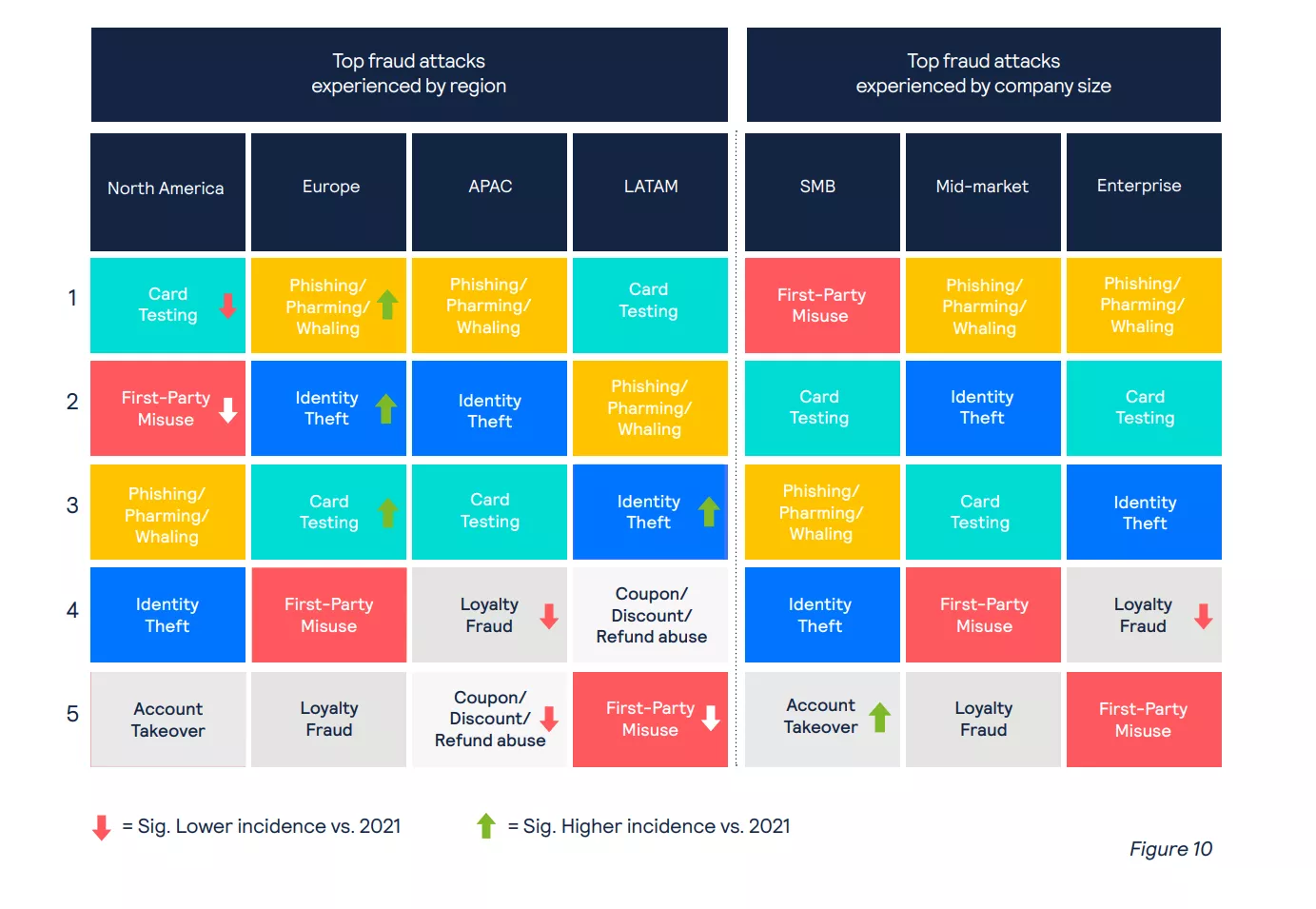Application Fraud – An Open Door for Fraudsters
Digital transformation, accelerated by the pandemic, has increased the threat of application fraud

Fraud at the point of application has long been an issue for lenders. Over the years, other sectors that needed personal data to set-up accounts and provide access to services have also fallen in the line of fire of criminals. We have seen insurance, utilities and mobile phone contracts all targeted by application fraud. This trend has grown considerably, as the pandemic forced rapid digital transformations across organizations that were far from ready.
The last few years have seen enormous demand for digital onboarding and vastly higher expectations from consumers for instant access to new credit and services. The winners and the losers during this time have been differentiated by the speed and ease of the application journey experienced by their customers. A significant proportion were (and still are) willing to switch companies for a better digital experience. During 2021, we saw the optimization of the customer experience top the agenda within organizations.
For fraudsters, this sharp and hasty shift to digital and the intense focus on customer experience has opened doors. Application fraud soared during the pandemic and continues to grow today. Evolving technology (bots, cloud infrastructure and virtual machines) has enabled criminals to submit fraudulent applications at scale to different organizations.
In most cases, fraud controls are still not taking place at the point of application. In areas, including the UK and parts of Europe, where there are some provisions in place, the application process involves rules, credit bureau data and batch processing. Fraud, however, is evolving quickly. Therefore, the way fraud has traditionally been tackled at the application stage needs to evolve too.
Trends driving the rise in fraudulent applications
Identity theft is one of the key drivers for the soaring levels of application fraud. It remains one of the top three fraud attacks, alongside phishing and card testing. In Europe specifically, organizations have seen a significant rise in identity theft over the past year. Globally, it’s expected to be the cause of losses to online payment fraud reaching $206 billion by 2025.
Another rapidly rising phenomenon that has been highlighted by financial services organizations as even more challenging to identify and address than identity theft is synthetic fraud. It’s driving a new wave of fraud rings that are fabricating hundreds of thousands of identities to apply for new accounts or credit lines, then using them to steal or move money before embarking on other types of fraud. The threat from synthetic identity fraud is amplified as the number of identities that can be created is virtually unlimited and there is no real person that owns the identity who could spot and report the misuse.
First party fraud (where genuine individuals exaggerate personal details to access new or increased lines of credit) is also on the rise, driven by challenged finances. Last year, it was the fourth biggest type of fraud attack across Europe.
(Table below from Global Fraud and Payments Survey Report 2022)

Understandably, with the rising cost of living many households are struggling with repayments and organizations are bracing themselves for higher levels of payment defaults, but how many of these will be from genuine households struggling to pay versus stolen or fabricated identities? A substantial amount of fraud gets hidden in an organization’s bad debt losses. Some estimates put fraud at between 5% to 20% of bad debt, but in cases where no payments have been made at all, it could be as high as 50%.
Signs of fraud, whether it is first or third party, can and should be spotted at an earlier stage. Instead, fraud checks are being introduced too late into the cycle, resulting in high levels of first payment defaults.
Fraudsters are attacking other sectors
While the financial services sector is, and continues to be, a key target for fraudsters, no sector is immune to fraud. The current environment means that every sector is now being hit hard with telecommunications a prime example. The high cost of smartphones has made them as valuable to fraudsters as loans and credit cards. Over the last 20 years, the cost of top-end mobile phones has soared by 490%, with some premium smartphones now costing over half of an average consumer’s monthly wage.
Telcos has become a key target for application fraud – where it is usually referred to as subscription fraud - and is seeing extremely high levels of first payment default fraud – with people applying for mobile phone contracts, then disappearing with the phones before the first payment is made. Subscription fraud is now the number one fraud type globally within the telco sector.
By 2021, total fraud losses in this sector reached 2.22% of its global revenues ($1.8 trillion USD), which were estimated to be approximately $39.89 billion USD. However, with a significant proportion of fraud incorrectly being classified as debt in this sector, losses from fraud are likely to be much higher.
Compounding the issue is the fact that sales teams are incentivised to secure the contract, rather than ensure the application is genuine. Unless fraud checks are made systemic and a vital part of the originations process, the issue will never be resolved for this sector. However, there’s a clear shift taking place, with some of the more innovative telco providers looking at solutions to tackle fraud at the point of application. We expect to see some changes in the way fraud is managed in telcos.
The customer friction factor
Organizations want to reach a balance between onboarding as many legitimate customers as possible, but making sure fraudsters are kept out. The concern is that too many overt checks could lead to consumers abandoning the process.
Fraud checks, however, require much of the same personal information as is needed to make an application, so they can, and should, be tightly integrated within the whole origination process. By making them a part of the same workflow as managing the credit checks, organizations are giving their customers a better experience as they’d only be required to go through the process once. Furthermore, fraud controls at the point of application can alert organizations to ‘suspicious circumstances’ rather than ‘confirmed fraud’, enabling them to adjust their offers more appropriately. For example, granting access to an account, but not an overdraft. More customers can be brought on board without delay and without the organization overexposing itself.
The right solution
A lot of fraud is being missed because too many organizations do not have an effective solution that looks for fraud at the point of application. Those that do have a solution often find that it is disconnected from the systems used for originations and customer management. Data valuable to a fraud decision is siloed in an originations system and vice versa. This means that either customers are inconvenienced by being asked for the same information multiple times or decision making is ill-informed.
With fraud evolving at such a rapid pace, fraud solutions must be flexible and agile to keep up. The more data sources that can be brought together, the more insight that can be gleaned, whether it’s internal or multiple external data sources. Effective fraud solutions can no longer be tied to just one data provider, and they must work in real time.
FICO Platform, for example, eliminates data silos and delivers interoperability across multiple use cases. As it is component-based, the same capabilities that manage an application fraud use case can also be used to manage customer originations. Data whether internal or from third party providers can be accessed across all use cases to deliver more informed and customer-centric decisions. It gives organizations unprecedented insight into their customers’ immediate and future needs. This is what will enable organizations to minimise customer friction and detect suspicious applications without interrupting the customer experience.
Fraud losses are burgeoning and much of it is being misclassified as bad debt. It’s time to close the door on application fraud.
How FICO’s Advanced Analytic Capabilities Can Help Your Organization Fight Fraud
Popular Posts

Business and IT Alignment is Critical to Your AI Success
These are the five pillars that can unite business and IT goals and convert artificial intelligence into measurable value — fast
Read more
FICO® Score 10T Decisively Beats VantageScore 4.0 on Predictability
An analysis by FICO data scientists has found that FICO Score 10T significantly outperforms VantageScore 4.0 in mortgage origination predictive power.
Read more
Average U.S. FICO Score at 717 as More Consumers Face Financial Headwinds
Outlier or Start of a New Credit Score Trend?
Read moreTake the next step
Connect with FICO for answers to all your product and solution questions. Interested in becoming a business partner? Contact us to learn more. We look forward to hearing from you.
